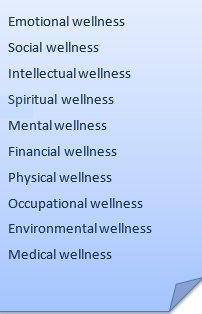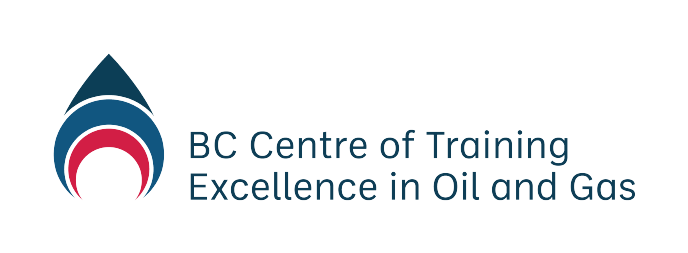-
Module 2.0 How to be Successful in this Course
-
Module 2.1 Introduction to Natural Gas
-
Module 2.2 The Natural Gas Industry in British Columbia
- Overview
- Learning Outcomes
- Natural Gas Science – The Simple Version
- Natural Gas Science – Chemistry
- Natural Gas Science – Physics
- Natural Gas Science – Units of Measurement
- Natural Gas Science – Geology
- Natural Gas Resources and Uses
- Oversight of the Natural Gas Industry
- Understanding Land Rights and Natural Gas
- Energy and the Future
-
Module 2.3 Upstream – Well Site Selection, Preparation and Drilling, Completion, Production, Water Recycling, and Reclamation
- Learning Outcomes
- The Upstream Sector – Extraction and Processing
- The Upstream Sector – Exploration and Site Selection
- The Upstream Sector – Preparation and Drilling
- The Upstream Sector – Completion
- The Upstream Sector – Production
- The Upstream Sector – Water Recycling
- The Upstream Sector – Reclamation
- Upstream Companies and Jobs in British Columbia – Companies
- Upstream Companies and Jobs in British Columbia – Industry Associations
- Upstream Companies and Jobs in British Columbia – Professional Associations
- New Vocabulary
-
Module 2.4 Midstream – Transportation, Processing, Refining
- Learning Outcomes
- The Midstream Sector
- The Midstream Sector – Processing Natural Gas
- The Midstream Sector – Liquefied Natural Gas
- The Midstream Sector – An Emerging Industry
- The Midstream Sector – Processing LNG
- The Midstream Sector – Proposed LNG Projects in British Columbia
- Transportation
- Midstream Companies and Jobs in British Columbia
-
Module 2.5 Downstream – Refining and Markets
-
Module 2.6 Health and Wellness in the Natural Gas Industry
-
Module 2.7 Safety
-
Module 2.8 Terminology and Communication
-
Module 2.9 Jobs and Careers
- Learning Outcomes
- Industry Outlook
- Technology is Changing Workforce and Skills
- Employment in the Natural Gas Industry
- Employment in the Natural Gas Industry – Types of Employment
- Employment in the Natural Gas Industry – Range of Jobs
- Employment in the Natural Gas Industry – High Demand Jobs and Occupations
- Occupational Education and Training
-
Module 3.0 How to be a Valued Employee
-
Module 3.1 Identifying Interests and Skills
-
Module 3.2 Looking for Employment in Natural Gas
-
Module 3.3 Applying for Employment in Natural Gas

Many major corporations in the natural gas industry have implemented extensive health and wellness programs for their regular employees. These programs cover some or all of the costs of some of the following services; services that positively contribute to the wellness of their employees
- Addiction counselling
- Career counselling
- Childcare services
- Financial counselling
- Eldercare services
- Situational counselling
- Personal emotional counselling
- Relationship counselling
- Nutritional counselling
- Homecare services
- Legal consultation
- NurseLine services
The natural gas industry operates under extremely strict government regulations and safety standards to ensure the well-being of workers. Companies, industry associations, communities, and governments collaborate to implement programs to help make the Canadian natural gas industry as safe as possible.
Workplace health and safety, including substance abuse policies and programs, is of critical concern where heavy industrial and construction or technical competency is required for the job. Worker safety is paramount.
The following are indicators that supervisors and co-workers should be aware of. If you recognize these patterns in yourself or others, seek help. Talk to your company’s human resource representative. By doing so, you may save yourself, or someone else, from being critically or fatally injured on the job; or from critically or fatally injuring another person (a family member, friend, or co-worker) and from losing your (or their) employment.
Patterns to watch for include:
- Lateness –A worker who is chronically late for the job puts other workers at risk. Many tasks are dependent on having a full crew of workers and having that full crew attend a safety meeting before the workday begins.
- Absence – A worker who is often absent makes it difficult for their team members to work cohesively or together.
- Job Function – These patterns can include lack of awareness or focus, high degree of distraction, poor decision-making, difficulty remembering tasks or responsibilities, and decreased productivity.
Learning Activity 2: Creating a Personal Wellness Plan
In this activity, you will create your own personal wellness plan. A wellness plan is simply a series of actions, which if followed, will help you to be and stay healthy.
There are lots of different aspects or dimensions of personal wellness, each of which impact your well-being. Ideally, your plan should address most, if not all of the elements to ensure optimal overall well-being.
Follow these steps to create your own wellness plan.

Step 1: Assess your wellness
Think about each of the aspects of personal wellness listed in the graphic box above and how they relate to you; then think about the amount of wellness, or fulfillment, you feel you have in each area.
Step 2: Identify areas that could use improvement
Be honest with yourself about how satisfied you feel in each aspect of wellness, so that you can create a wellness plan that works for you.
Step 3: Set goals related to improvements you want to make
There are things you can do to improve every aspect of personal wellness. Once you identify the areas that you feel you need to work on, write down specific goals to accomplish for each area that will move you toward greater overall well-being.
Step 4: Record your progress

Make a chart or create a journal outlining each aspect of personal wellness and the goals you set to improve on those aspects. Mark
important dates and checkpoints in a calendar designated specifically for the purpose of your personal wellness plan, so that you can see your progress. One indication that your plan is working is that you should start to feel better, lighter, and happier.
Step 5: Update the goals of your wellness plan as needed
We all continue to change a little everyday and our responsibilities and recreation change as well. Monitor your progress and reassess your needs frequently to keep your wellness plan as useful to you as possible.
